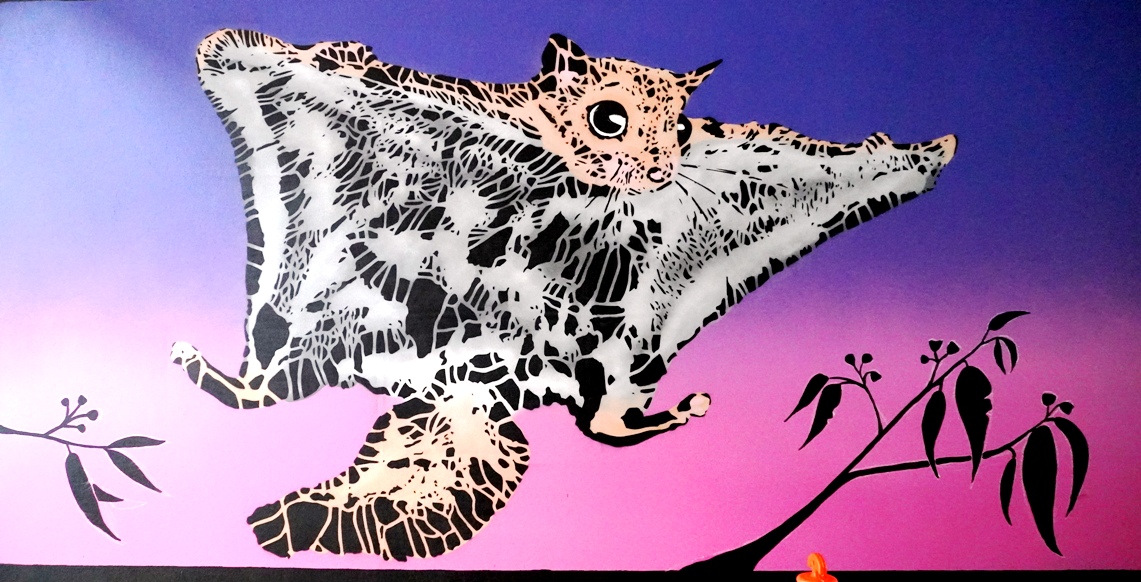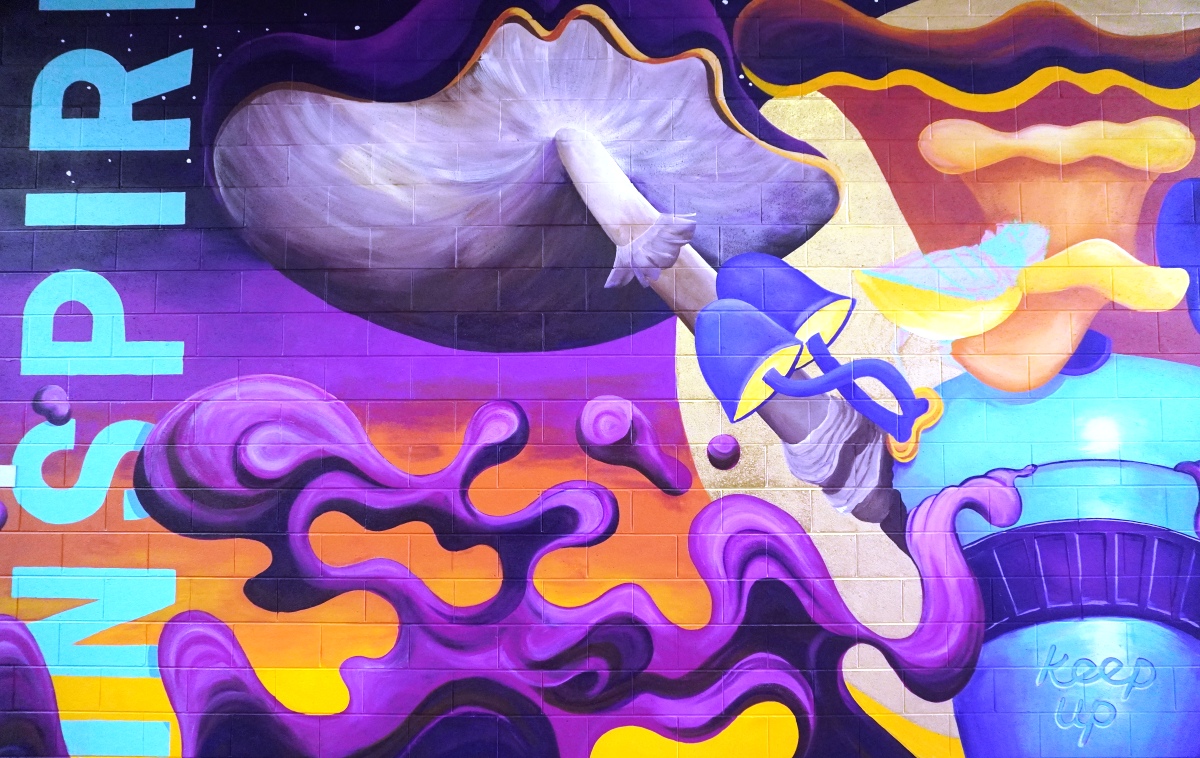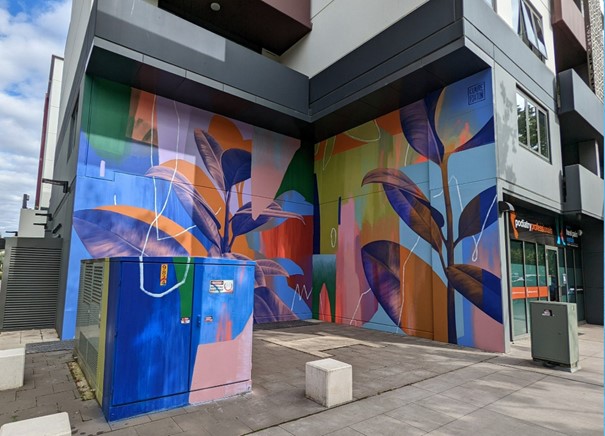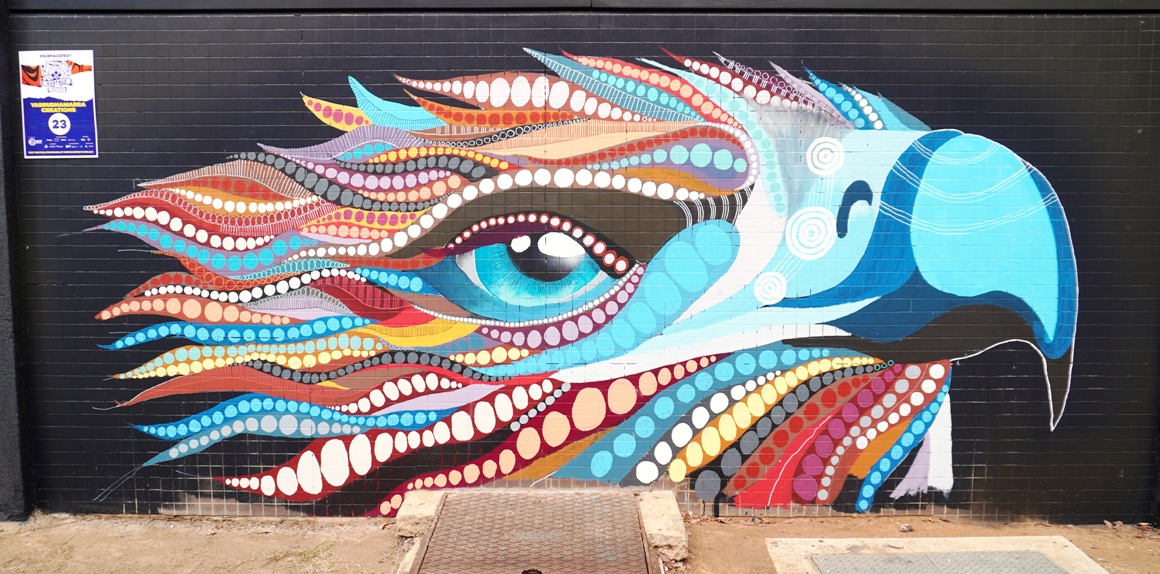Text: Anna-Sophie Jürgens, Lisa Petheram & Blake Thompson | Section: Articles about Artists | Series: Street art, Science and Engagement
Summary: This article introduces w/k’s new series on street art and science, explains how it belongs within the journal, defines key terms and discusses their context, and explores the expected artistic and scientific scope and framework.
Street Art, Science and Engagement in w/k – what to expect
The aim of the online journal w/k – Between Science and Art is to thoroughly investigate the interfaces, interconnections and influences between science and art. All art movements – including street art – are interesting for w/k as long as they have the following criteria: artists work in a science-related way, there are collaborations between science and art, and science/art border crossers are involved (see here for the journal’s profile). The articles published in the new series Street Art, Science and Engagement follow this aim and the established w/k structure and section profiles: The articles are written by artists, about artists, and are appropriate, for example, for w/k’s section on Art-Related Scientists; they focus on individual artists or collaborations, in addition to theoretical aspects of the art and science theme. It differs from other w/k series and articles because street artists also reflect on their audience when exploring intersections between science and art, as street art is (in many cases) co-created with communities (and in some cities, such as in the Australian capital Canberra, supported by the government) – it is per se a public art. The articles published in this series have a purple frame.
Street Art – A brief introduction
Street art encompasses a variety of mediums and techniques, including painting, spraying, chalk, posters, stickers, and even sculpture. Street art is public art, as it is displayed on public buildings, streets, trains and other publicly accessible spaces and urban environments. It draws on the viewers’ knowledge, adds to it and questions it. In this way, (new) forms of engagement and relationships between community actors (e.g. businesses and residents) emerge. Through community engagement (when artists develop murals together with communities), street art helps create socially-inclusive cities. Street art can create safer social environments, increase a city’s economic revenue and stimulate our collective imagination. It tells stories, enlivens our surroundings and adds colour to our daily lives. Tim Phibs, an artist and curator of a recent street art festival in Canberra (Australia), refers to artistic and cultural expressions on urban surfaces as “living infrastructure” (see booklet of the Surface Festival, 6).
The origins of street art are commonly traced back to 1970s New York (although some scholars refer to the 1920s and 30s as powerful influences), the decade’s anti-commercialism and its subcultures (the 2019 film Martha: A Picture Story offers fascinating insights into the genesis of street art). Such early, subversive expressions of street art included graffiti on the sides of subways and walls. While illegal artworks continue to populate urban spaces, there is a trend towards legitimising and celebrating urban artists as promoters of community connection and contemporary placemaking. In many cities, e.g. in Australia, street art has become a very popular form of public art, with artists transforming entire streetscapes and neighbourhoods into laborARTories, often inspired and influenced by ecological and scientific themes. This series introduces some of these artists and explores how they collaborate with scientists, engage with scientific research and how their work communicates science-related messages to a large audience – the public.

Street Art and Science
As street art is inextricably linked to its, and our, environment, and often aims to stimulate critical reflection on the challenges we face in the 21st century, it is not surprising that our relationship with this and other (present, past and future) environments, the interconnectedness of people, places and land, and environmental issues and concerns more broadly play an important role in street art and graffiti murals. Artists exploring the impact, underbelly, pitfalls and promises of the Anthropocene – e.g. global warming, pollution and waste – are not only well-informed about the state of research in the relevant fields (if not researchers themselves), but also collaborate with universities and other research institutions when conceptualising and developing their artworks. This also applies to health advocacy and social engagement. Some street artists run research-based seminars and workshops exploring the power of street art to improve health issues, empower young women and promote social cohesion and environmental awareness. These fundamentally scientific activities can be understood as an expression of public engagement and science communication, because the “transformation of specialized science images to a general image of the sciences is part of […] social communication” (Hüppauf/Weingart 2007, 19). In the new series Street Art, Science and Engagement we want to examine some of these fascinating interrelations between art, science and engagement.

Street Art, Science Communication and Engagement
The public image of science is mediated and communicated through visuals, for example in the form of visual representations and visual images. “Contemporary art […] is an important medium for popularizing the sciences and, by implication, contributes to their changing popular image. Changes of the science images are connected to a changing art world and also to a change in the popular image of the sciences.” (Hüppauf/Weingart 2007, 17)
Street art is undeniably one of the most accessible visual mediums due to its existence in high-density populaces. Regardless of demographic, as long as a street art exists on a surface, anyone who walks past it will be exposed to it. Furthermore, street art is so colourful and aesthetic when contrasted to buildings or unpainted surfaces that it naturally draws the attention of people walking past. This means that a message can be imparted without much initial commitment from the viewer. To generate the greatest possible engagement with street art, many artworks are created to appeal to the widest possible audience – to inspire, but also to provoke thought. This also means that the environment and community can express themselves and their personal, local issues through street art to many people. Because of the large engagement and artistic accessibility, these artists shape the environment that these artworks exist within, and everyone who sees them. As Phibs said, street artists “want to educate the public and encourage the local art scene” (quoted in Cerabona 2021).

Graffiti and Street Art in Canberra, the heart of the Australian Capital Territory (ACT)*
In Canberra – the Australian capital – there is a lively street art and graffiti culture with artworks spread across the city, painted mainly by local artists with a diverse range of skills. Many people do not realise that Canberra has a long history of graffiti and is home to many established graffiti artists (see Canberra Graffiti Project (tuggeranongarts.com)). Through the ACT Government graffiti programme, street art and graffiti commissions and projects are usually undertaken on public and (sometimes) private assets. Commonly, projects are designed with youth or community groups and schools (or identified individuals), to include and mentor disengaged young people and the broader community. Projects involve commissioned artwork, mentoring programmes and workshops, events and, recently, Canberra’s first street art festival (ACT Surface Festival (surfacefest.com.au)). The Graffiti Management Coordinator role in the ACT Government graffiti programme was developed to help provide a progressive and restorative justice approach to graffiti management in Canberra. The role involves working with professional artists, community members, and taggers and artists doing unauthorised graffiti. It helps provide mentorship and professional development opportunities, as well as liaison between property owners and artists.
As part of the graffiti programme, there are 32 dedicated legal graffiti practice sites around Canberra where anyone from the general public can practise painting (see Legal graffiti practice walls (City Services.act.gov.au)). One of these walls, the Woden drains is considered the longest legal practice site in the southern hemisphere and draws visits from international and national graffiti artists. People can also approach ACT Government to develop an agreement to temporarily manage certain sites by providing regular artwork. The programme also takes a restorative justice approach to working with individuals who are found doing unauthorised graffiti. For example, when a private asset owner identifies someone doing unauthorised graffiti on their property, the Graffiti Management Coordinator tries to find a solution that helps support the asset owner manage the graffiti (e.g. organise to have artwork installed), and tries to create a professional opportunity and experience for the graffiti artist (if interested).
Through the graffiti programme, people who are doing unauthorised graffiti are often invited to be involved in projects. For example, recently the ACT Government managed and sponsored the ACT Surface Festival. The organisers wanted this festival to be inclusive and to acknowledge and celebrate the strong graffiti culture in Canberra – not just street art. Through the festival, the idea was to find ways for people who are doing unauthorised graffiti to participate in Surface. One method involved installing a decommissioned Transport Canberra bus in a city park for the week and inviting local graffiti artists to use it as a canvas to share their artwork. There were several other projects as well (https://fb.watch/bWd_gIqHUN/). But Canberra – and this series – not only embraces street art and graffiti, it also displays portraits, stencils, Indigenous art, geometric and abstract pieces (cf. Bernasconi 2022). This series will introduce some of these and other artists to w/k!

References
▷ Bernasconi, Jimmy: Innovative graffiti program creates capital of colour. In: Riotact, 31 March 2022, https://the-riotact.com/innovative-graffiti-program-creates-capital-of-colour/544412.
▷ Cerabona, Ron: Urban art festival Surface will celebrate graffiti in Braddon and Civic. In: The Canberra Times, 10 June 2021, https://www.canberratimes.com.au/story/7290278/new-festival-to-celebrate-citys-graffiti/.
▷ Hüppauf, Bernd and Peter Weingart (eds.): Science images and popular images of the sciences. New York: Routledge 2007, 3–51.
▷ https://www.surfacefest.com.au/ (the festival’s promotional video https://fb.watch/bWh9BIT1at/).
* The ACT is a federal state – similar to Berlin in Germany.
Details of the cover photo: Dan Power + REM (Lachie Taylor): Electric Feels. Surface Festival Canberra (2022). Photo: Blake Thompson.
How to cite this article
Anna-Sophie Jürgens, Lisa Petheram and Blake Thompson (2022): Street Art, Science and Engagement: Introducing a New Series. w/k–Between Science & Art Journal. https://doi.org/10.55597/e7564


Be First to Comment